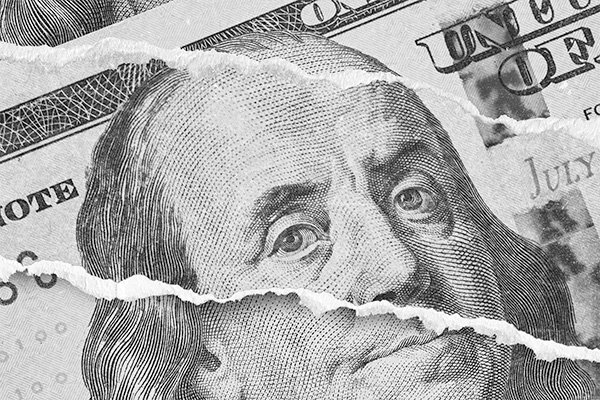Water Damage Porperty Claim Lawyer
When you live in Fort Lauderdale, Florida, you can expect your property to suffer water damage. Due to the swampy nature of the Florida landscape, it’s water can easily damage the roof, foundation, and structure of your home. That’s why Fort Lauderdale homeowners file water damage claims with their insurance companies at an alarming rate. In fact, water damage is the second-biggest reason why Floridians file property claims.
Get a FREE case evaluation today.
Get the Most Compensation Possible
Did you know that just a of water in your home can result in thousands of dollars in property damage? There are many possible ways you can suffer this type of water damage. Some of the most common reasons for water damage claims include:
- Hurricane Rain and Flooding
- Burst or Damaged Pipe
- Sudden Discharges
- Overflowing Water System / Flooding
It can be difficult to get approval for a water damage claim. Insurance companies don’t often cover flood damage in a . Since most water damage stems from a flood of some kind, the insurance claims adjusters will use that as an excuse to deny your claim. Whether the flood was caused by a storm or burst pipe, it still counts as flood damage either way.
However, you don’t need to accept their decision lying down. You can seek the services of a at Louis Law Group. We can represent you in the eyes of your insurance company. If your water damage claim was denied, we’ll negotiate on your behalf and try to see if we can reverse the denial.
Water damage caused by an issue with your plumbing or water system does not qualify as flooding. The same goes for a leaky roof that lets rainwater into your home. That would be water damage. It’s not categorized as a flood. Don’t worry if you’re confused about all this, because we’re here to figure things out for you.
Our mission is to fight for the most compensation possible after your property water damage claim is filed. We recommend that you let us file the claim for you, because it’ll send your insurance company the message that you have legal representation on your side. Once they see that, they’ll be less likely to ignore you or your claim.
After all, insurance companies know they could be wiped out by a lawsuit judgment if they wait to go to court over a claim. It’s in their best economic interest to approve your claim and compensate you for all the property damage that the water caused. This would allow them to settle for a lot less money than what a jury would reward you. In the end, at least you’ll receive your funds faster, without having to wait for a lawsuit to be concluded.
, call (954) 676-4179 and let us help you get started.
Contact Us Now
FREE CONSULTATION
Fort Lauderdale
Property Claim
PRACTICE AREAS
- Bad Faith Property Claim Lawyer
- Denied Property Claim Lawyer
- Water Damage Claim Lawyer
- Flood Damage Claim Lawyer
- Fire Damage Claim Lawyer
- Business Income Loss Lawyer
- Wind Damage Claim Lawyer
- Mold Damage Claim Lawyer
- Roof Damage Claim Lawyer
- Theft Damage Claim Lawyer
Florida Lawyers
Near You
- Miramar Property Claim Lawyer Near Me
- Fort Lauderdale Property Claim Lawyer Near Me
- Tamarac Property Claim Lawyer Near Me
- Naples Property Claim Lawyer Near Me
- Pensacola Property Claim Lawyer Near Me
- Jacksonville Property Claim Lawyer Near Me
- West Palm Beach Property Claim Lawyer Near Me
- Cocoa Property Claim Lawyer Near Me
- Homestead Property Claim Lawyer Near Me
- North Miami Beach Property Claim Lawyer Near Me
- Tallahassee Property Claim Lawyer Near Me
- Vero Beach Property Claim Lawyer Near Me
- Jupiter Property Claim Lawyer Near Me
- North Miami Property Claim Lawyer Near Me
- Cape Coral Property Claim Lawyer Near Me
- Sunrise Property Claim Lawyer Near Me
We have recovered over $200,000,000 for our clients.
If you’ve encountered property damage, been in an accident, had a health claim denied, or need assistance with an SSDI claim, you will likely need to deal with an insurance provider. Unfortunately, this can be a drawn-out process, and it’s far too common for valid claims to be unfairly denied. As your trusted insurance attorneys, we don’t simply wait to see how your insurer responds. Instead, we use our knowledge and determination to negotiate directly on your behalf and secure what you may be rightfully owed.

How it Works
No Win, No Fee
We like to simplify our intake process. From submitting your claim to finalizing your case, our streamlined approach ensures a hassle-free experience. Our legal team is dedicated to making this process as efficient and straightforward as possible.
You can expect transparent communication, prompt updates, and a commitment to achieving the best possible outcome for your case.
Free Case EvaluationLet's get in touch
We like to simplify our intake process. From submitting your claim to finalizing your case, our streamlined approach ensures a hassle-free experience. Our legal team is dedicated to making this process as efficient and straightforward as possible.
290 NW 165th Street, Suite M-500, Miami, FL 33169
